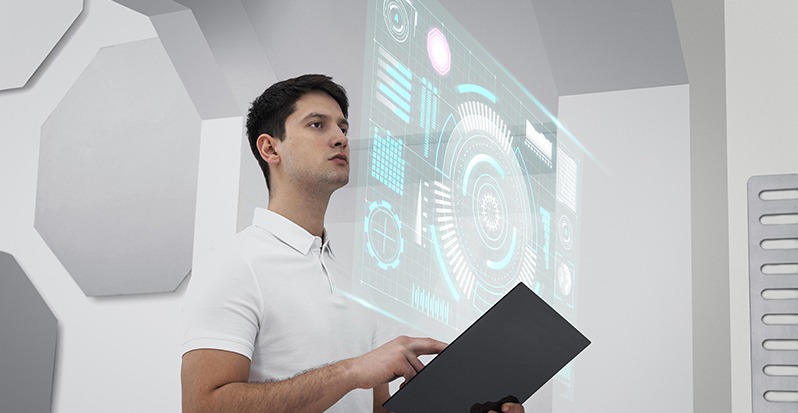The Role of AI And Analytics in Connected Cars
Imagine a car in a remote area. Due to poor lighting, the car collides and meets with an accident. Earlier, it took time for the police to identify the accident and send the rescue team to save the driver. However, things have changed now. In 2018, the EU legislation made it mandatory that all cars must have an in-built technology to alert the police officials in case of an accident. The GPS data helps the police to detect the car’s location and reach there quickly. Imagine a car in a remote area. Due to poor lighting, the car collides and meets with an accident. Earlier, it took time for the police to identify the accident and send the rescue team to save the driver. However, things have changed now. In 2018, the EU legislation made it mandatory that all cars must have an in-built technology to alert the police officials in case of an accident. The GPS data helps the police to detect the car’s location and reach there quickly. Similarly, the driver can use a smartphone app to start the engine and make the windows frost-free before getting into the car. From entertainment to driver’s safety and comfort, connected cars have re-imagined transportation. These cars are connected to the internet through wireless LAN. It allows the car to share data with devices inside and outside the car. This helps in vehicle management and ensures driver safety. Technologies such as data analytics and artificial intelligence (AI) make these cars smart. Let’s look at the role these technologies play. Role of AI And Analytics in Connected Cars Preventive Maintenance Like other cars, connected cars are also susceptible to wear and tear. However, the difference here is that it’s easy to detect the issues in advance and take preventive measures to fix them. Companies can leverage AI to monitor the vehicle’s lifecycle in real-time and alert the driver to fix it. Analytics can be used to accurately predict when the vehicle requires maintenance to avoid unexpected breakdowns. AI and analytics are also useful in car manufacturing. Companies can detect the defects in car parts at an early stage before they are even installed and ensure vehicle and driver’s safety. Accident Prevention A driver has to witness multiple hindrances on the road – from pedestrians, objects, bicycles, etc. while driving. There are other potential dangers too, such as foggy weather, snow, potholes, etc. Navigating such an unpredictable external environment can be cumbersome for drivers. Analytics collects data from a car’s sensors. It uses it to train AI to predict human behavior and other road challenges to ensure that it alerts the drivers on time to avoid object collisions and accidents. Nissan, for instance, uses sensors to alert the drivers and automatically lock the seat belts to prevent collisions. As the sensors collect more data, AI will be more effective in preventing accidents and ensuring driver safety. Improving driver’s experience Today’s customers want personalized and safe experiences. From offering infotainment services to informing about safety parameters and sharing the maintenance schedule in advance, car manufacturers like Mercedes, Toyota, and BMW have already started personalizing the driver’s experience. AI and analytics help in personalizing these experiences. It provides insights on different factors such as fuel efficiency, battery life, etc. that could help in improving the driver’s experience. Being data-driven helps car manufacturers to meet customers’ expectations and stay ahead in the competitive curve. Connected cars have in-built sensors, GPS, and cameras that help gather data and improve experiences. Transparency in supply-chain AI and analytics have been particularly useful in improving transparency in supply-chain management. Connected cars use well-integrated software and hardware. Hence, car manufacturers must have full visibility on the supply-chain operations. They need to deal with diverse data sets and also compare different price ranges and the quality of different components involved in building the car. Given the complexity, analytics can be useful to manufacturers. With the help of analytics, manufacturers can identify potential risks in the delivery and fix them to ensure seamless operations. Analytics also helps car manufacturers to understand the customer and market demands, how they interact with the company, and use those insights to predict customer needs better. Leverage OTA updates to improve the experience The ultimate goal of a connected car manufacturer is to identify defects on time and produce good-quality cars that meet the customer’s expectations. Considering that connected cars use embedded systems, the software requires continuous updates to deliver a good experience to customers. Whenever an over-the-air software or firmware upgrade happens, analytics can track its performance in real-time and improve it based on the data collected. Eventually, all this helps to improve the overall experience of the driver. Conclusion Connected cars have become a game-changer in the automotive industry. By 2025, over 14 million semi-autonomous vehicles will be seen on US roads. However, to build such cars, automotive companies must invest in embedded product design and development. This will ensure that the hardware and software used in the vehicles work cohesively to provide a seamless experience to drivers. To build such intelligent and complex systems, companies need resources with specialized skillsets. At Intellore, we have a team of engineers, designers, and developers who possess the skills to build connected systems for connected cars. We understand the complexities involved in the connected vehicle space and thus, combine our software and hardware expertise to build connected cars for tomorrow.


